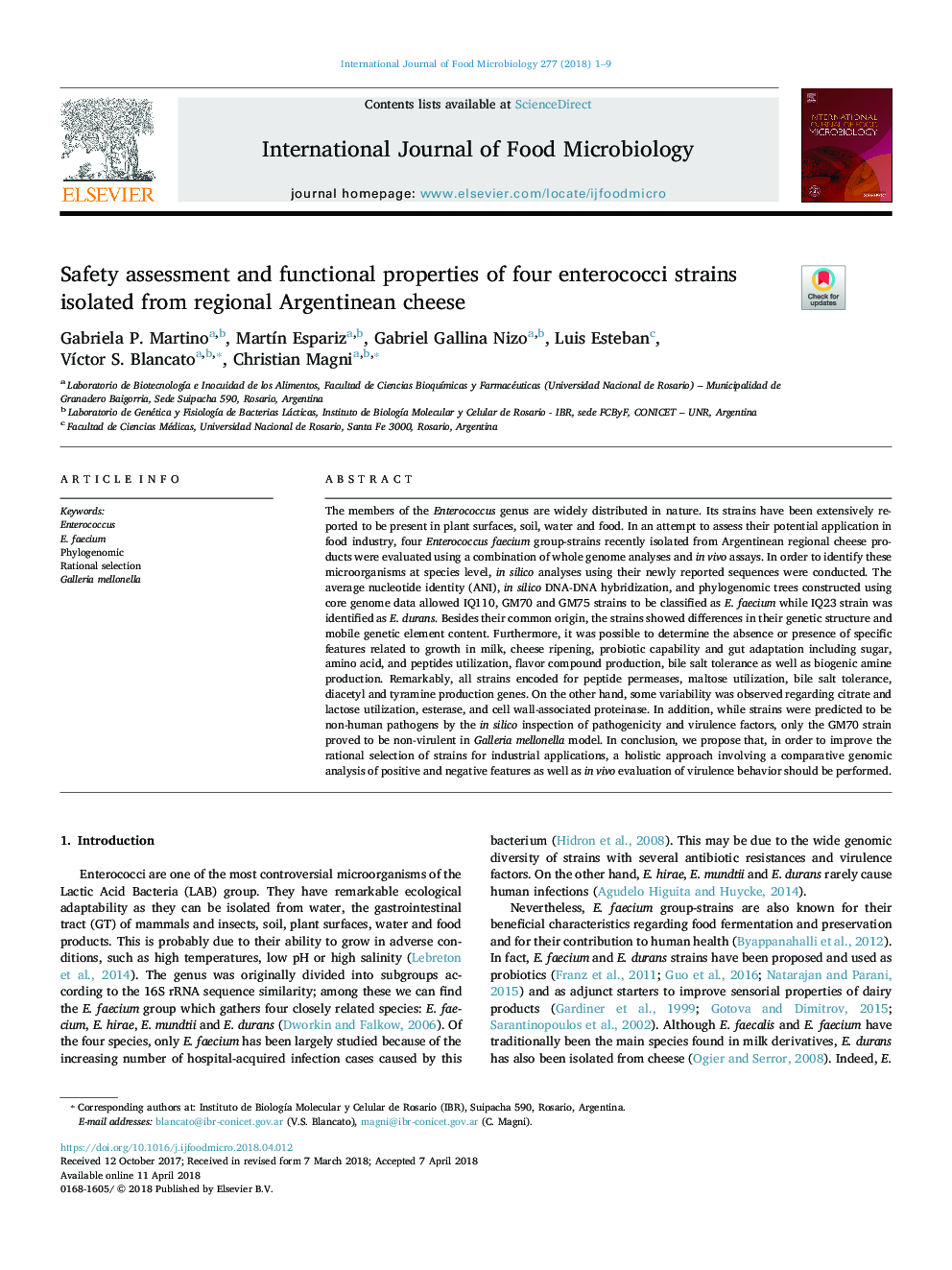| Article ID | Journal | Published Year | Pages | File Type |
|---|---|---|---|---|
| 8844174 | International Journal of Food Microbiology | 2018 | 9 Pages |
Abstract
The members of the Enterococcus genus are widely distributed in nature. Its strains have been extensively reported to be present in plant surfaces, soil, water and food. In an attempt to assess their potential application in food industry, four Enterococcus faecium group-strains recently isolated from Argentinean regional cheese products were evaluated using a combination of whole genome analyses and in vivo assays. In order to identify these microorganisms at species level, in silico analyses using their newly reported sequences were conducted. The average nucleotide identity (ANI), in silico DNA-DNA hybridization, and phylogenomic trees constructed using core genome data allowed IQ110, GM70 and GM75 strains to be classified as E. faecium while IQ23 strain was identified as E. durans. Besides their common origin, the strains showed differences in their genetic structure and mobile genetic element content. Furthermore, it was possible to determine the absence or presence of specific features related to growth in milk, cheese ripening, probiotic capability and gut adaptation including sugar, amino acid, and peptides utilization, flavor compound production, bile salt tolerance as well as biogenic amine production. Remarkably, all strains encoded for peptide permeases, maltose utilization, bile salt tolerance, diacetyl and tyramine production genes. On the other hand, some variability was observed regarding citrate and lactose utilization, esterase, and cell wall-associated proteinase. In addition, while strains were predicted to be non-human pathogens by the in silico inspection of pathogenicity and virulence factors, only the GM70 strain proved to be non-virulent in Galleria mellonella model. In conclusion, we propose that, in order to improve the rational selection of strains for industrial applications, a holistic approach involving a comparative genomic analysis of positive and negative features as well as in vivo evaluation of virulence behavior should be performed.
Related Topics
Life Sciences
Agricultural and Biological Sciences
Food Science
Authors
Gabriela P. Martino, MartÃn Espariz, Gabriel Gallina Nizo, Luis Esteban, VÃctor S. Blancato, Christian Magni,
